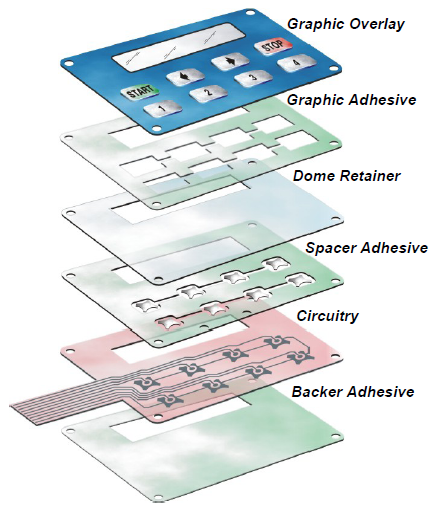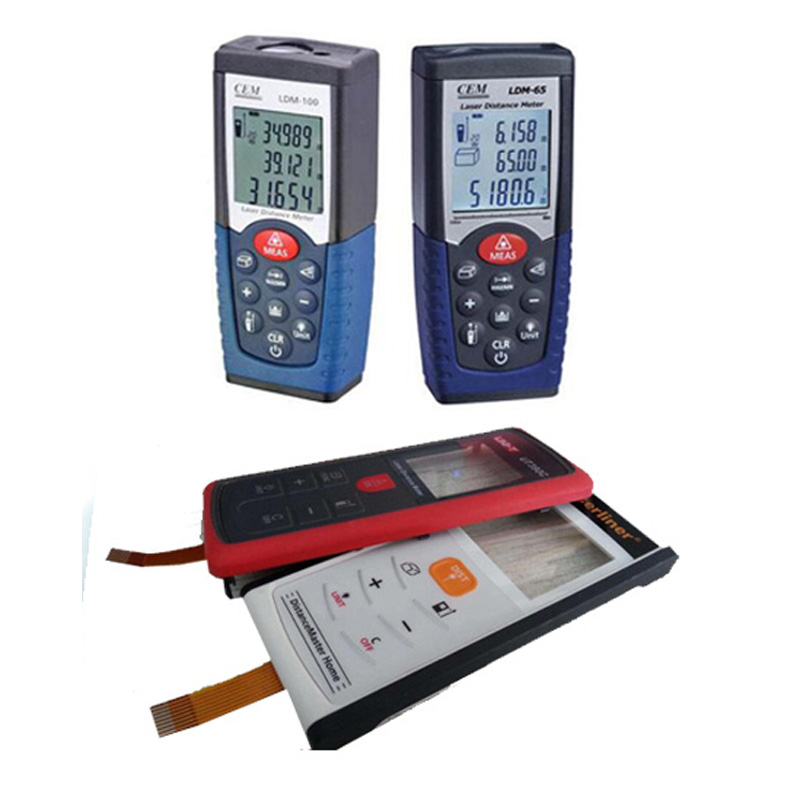Comprehending the Value of Membrane Layer Change in Modern Electronics
Membrane switches are important components in modern electronic gadgets. They use a blend of functionality and layout that improves user communication. Their durable and light-weight nature makes them appropriate for various applications. As sectors develop, the demand for modification and progressed attributes grows. Understanding just how membrane switches over add to technology exposes their value in shaping the future of electronic devices. What lies in advance for this technology?
The Essentials of Membrane Change Technology
Although usually ignored, membrane layer switch modern technology plays a vital role in the contemporary electronic devices landscape - membrane switch. These tools, composed of several layers, work as interface for different digital products, varying from household home appliances to clinical devices. A normal membrane button contains a graphic overlay, a spacer layer, and a circuit layer, which are diligently put together to produce a useful interface.When pressure is applied to the overlay, the circuit layer is completed, enabling signals to be sent to the tool. This technology is understood for its adaptability, making it possible for customization in layout, capability, and form to meet particular individual demands. In addition, membrane layer buttons are slim and light-weight, making them ideal for applications where room is a costs. Their durability and resistance to environmental factors even more enhance their appeal, ensuring they can hold up against harsh problems while keeping capability. Generally, membrane switch modern technology is integral to creating straightforward and reliable electronic devices

Key Advantages of Membrane Layer Changes
Membrane layer changes offer numerous vital benefits that make them a favored selection in different electronic applications. Their layout permits a portable type factor, making it possible for producers to create light-weight and sleek gadgets. Additionally, membrane layer buttons are resistant to dirt, moisture, and chemicals, which improves their resilience and long life sought after settings. The tactile responses offered by these buttons can enhance customer experience, making them easy and user-friendly to operate.Furthermore, membrane layer switches can be tailored with diverse graphics and colors, permitting distinct branding possibilities. The manufacturing procedure is generally cost-effective, especially for high-volume manufacturing, as it reduces setting up time and simplifies style. Membrane layer switches over require minimal maintenance, adding to reduced total functional costs. These advantages highlight their growing appeal in modern-day electronic devices, where integrity and user-friendly interfaces are essential.

Applications Throughout Different Industries
The flexibility of membrane layer changes allows their widespread fostering across numerous industries. In the clinical area, they are frequently used in analysis equipment and individual monitoring systems, using a durable user interface immune to contaminants. The auto industry uses membrane layer buttons for dashboard controls, improving customer experience with streamlined layouts that withstand harsh conditions. In customer electronics, they function as control panels for tools such as microwaves and coffee makers, providing a straightforward interface that is simple to tidy. The aerospace sector utilizes membrane layer buttons in cockpit controls, where dependability and area performance are critical. Furthermore, the commercial sector leverages these buttons in machinery and control systems to ensure durable procedure in requiring environments. This broad variety of applications emphasizes the flexibility of membrane switches, making them essential elements in description improving capability and customer communication throughout varied technical landscapes.
Customization and Design Flexibility

Future Patterns in Membrane Change Advancement
Emerging trends in membrane layer button advancement suggest an expanding emphasis on enhanced functionality and integration with smart try these out modern technologies. As customer need for a lot more advanced electronic devices rises, makers are concentrating on producing membrane switches over that not just serve basic functional functions but additionally include functions like touch sensitivity, backlighting, and haptic feedback.Furthermore, advancements in products are expected to improve durability and ecological resistance, making membrane switches appropriate for diverse applications in sectors such as health care, automotive, and customer electronics. The assimilation of capacitive touch innovation is likely to come to be much more prevalent, permitting sleeker styles and improved individual interfaces. membrane switch.Additionally, the rise of the Net of Things (IoT) is motivating the development of membrane layer switches that can connect wirelessly with other gadgets, enhancing interconnectivity. Generally, the future of membrane button modern technology appears promising, driven by advancement and the pursuit of user-friendly remedies
Frequently Asked Inquiries
How Do Membrane Layer Switches Over Compare to Typical Mechanical Buttons?
Membrane buttons, being extra space-efficient and providing a streamlined design, contrast with standard mechanical buttons that offer responsive responses. The former typically include customizable graphics, while the latter typically ensure longevity and reliability in different applications.
What Products Are Generally Used in Membrane Change Manufacturing?
Membrane layer buttons are typically produced utilizing materials such as polyester, polycarbonate, and published conductive inks. These products give sturdiness, responsiveness, and adaptability, making them ideal for numerous applications in digital gadgets and interface.
Can Membrane Layer Changes Be Repaired or Reused?
Membrane buttons can usually be fixed, especially if small concerns develop, such as adhesive failing or surface damage. However, full reuse is commonly restricted due to put on and prospective degradation of products over time.
How Do Ecological Elements Influence Membrane Switch Over Performance?
Ecological elements, such as humidity, exposure, and temperature level to chemicals, substantially influence membrane layer switch efficiency. Severe conditions can cause degradation, impacting responsiveness and longevity, eventually endangering the functionality of the gadget in various applications.
What Is the Common Life-span of a Membrane Change?
The regular lifespan of a membrane layer button generally ranges from 1 to 5 million actuations, relying on factors such as usage frequency, ecological problems, and the materials used in manufacturing, influencing durability and performance durability. A normal membrane button is composed of a visuals overlay, a spacer layer, and a circuit layer, which are meticulously set up to develop a useful interface - membrane switch.When pressure is used to the overlay, the circuit layer is completed, permitting signals to be sent to the device. The tactile comments supplied by these buttons can boost customer experience, making them intuitive and easy to operate.Furthermore, membrane layer buttons can be tailored with varied graphics and shades, permitting for one-of-a-kind branding possibilities. As customer need for extra innovative digital tools rises, suppliers are concentrating on developing membrane layer over here changes that not only serve basic operational duties yet additionally include functions like touch sensitivity, backlighting, and haptic feedback.Furthermore, developments in materials are expected to boost durability and ecological resistance, making membrane layer changes appropriate for diverse applications in sectors such as medical care, vehicle, and consumer electronics. The assimilation of capacitive touch innovation is likely to become extra widespread, enabling for sleeker designs and enhanced customer interfaces.Additionally, the surge of the Net of Points (IoT) is motivating the development of membrane layer changes that can communicate wirelessly with various other gadgets, enhancing interconnectivity. Membrane layer buttons, being more space-efficient and offering a smooth design, comparison with conventional mechanical buttons that supply tactile responses